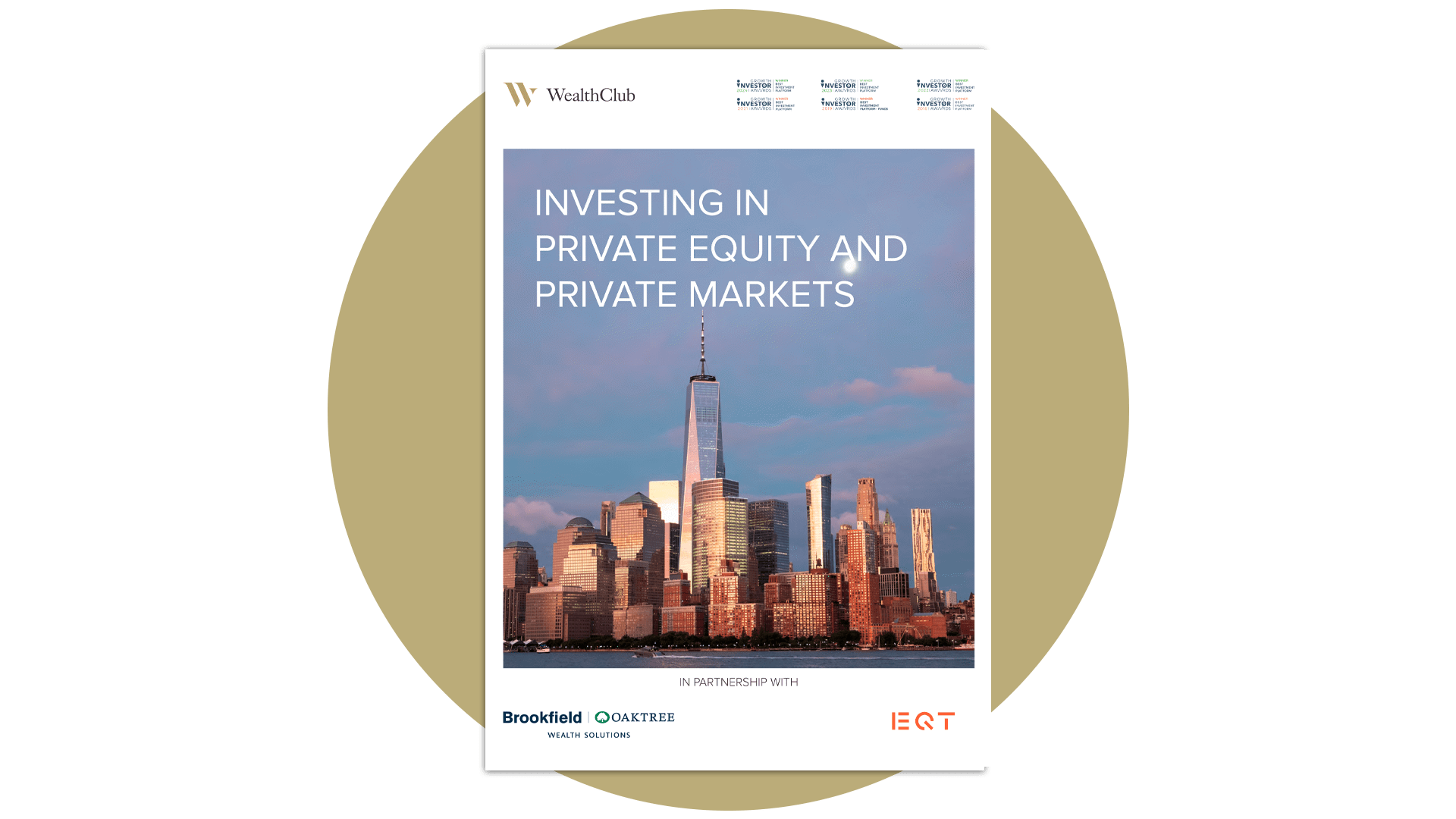In July 2025, Chancellor Rachel Reeves unveiled a set of measures, dubbed the Leeds Reforms, “to rewire [the] financial system, boost investment and create skilled jobs across the UK”.
One such measure is to allow Long Term Asset Funds (LTAFs) to be held in Stocks & Shares ISAs from next April.
In a nutshell, LTAFs are a relatively simple way for individual investors to get exposure to long-term, illiquid assets like private equity, private debt, real estate, and infrastructure.
Being able to hold such funds in an ISA should “allow more individuals to invest in assets that will support the UK’s future success, like innovative businesses and infrastructure – which can also deliver better returns”, the Treasury commented.
And so it happened that LTAFs, until recently largely unheard-of outside investment circles, now appear to be basking in the limelight. Indeed, a recent survey reveals 57% of UK investors would consider investing. Yet, in practice, the market is still in its infancy and will have some catching up to do before LTAFs can be widely accessible to ISA investors.
What are LTAFs? Why have they been introduced – and now made more accessible? How can individual investors access LTAFs? Are there any options to invest in Private Markets today? Will Wealth Club offer LTAFs? In this article, we cover the main facts.
Important: The information on this website is for experienced investors. It is not a personal recommendation to invest. If you’re unsure, please seek advice. Investments are for the long term. They are high risk and illiquid and can fall as well as rise in value: you could lose all the money you invest.
What are Long Term Asset Funds, or LTAFs?
The history of LTAFs goes back to 2020, when then Chancellor Rishi Sunak pledged to launch the UK’s first Long-Term Asset Fund to encourage pension funds to funnel capital towards the UK’s economic recovery. It then took around a year for the legislation to follow, in 2021, with further refinements to broaden access and improve operational efficiency introduced since.
LTAFs are a new category of UK open-ended funds (like a unit trust or an OEIC), authorised by the FCA. They are similar to funds that have long been in place in other parts of the world, including Europe and North America.
LTAFs are designed to invest efficiently in long-term, illiquid assets, such as private equity, private capital, real estate and infrastructure. More than 50% of the fund must be in unlisted securities or other long-term assets.
The first LTAF was launched in March 2023, aimed at defined contribution (DC) pension schemes.
Why have LTAFs been introduced – and now made more accessible?
From the government’s point of view, encouraging investment into private companies and infrastructure projects is crucial to foster long-term economic growth.
From an investor’s point of view, it’s a chance to get exposure to a vast universe of previously untapped opportunities, offering the potential for diversification and superior performance, though this is not guaranteed.
Potential for diversification
Global stock markets are shrinking. In the US, the number of publicly traded companies has shrunk from a peak of around 8,000 in 1996, to around 4,000 today. Meanwhile, the IPO (initial public offering) market remains sluggish across the globe.
As a result, increasingly, some of the best growth stories are happening beyond the stock exchange. Of the 159,000 companies generating $100 million or more in annual revenue, around 140,000, or 88%, are privately owned.
Historically, the greater breadth of investment opportunities has played a part in private equity’s ability to produce superior investment returns.
Potential for superior investment performance
In the 25 years from 1999 to 2024, annualised returns on Private Equity funds (funds investing in large private companies) surpassed global listed equity funds by 6.2% a year. Put differently, if you’d invested $10,000 in a hypothetical basket of Private Equity funds 25 years ago, you could be sitting on around $130,000 today. That compares to around $30,000 from an equivalent investment in global listed equities. Figures for illustrative purposes only and capital is at risk. Past performance is not a guide to the future.
LTAFs, like other types of open-ended, semi-liquid Private Markets funds could bring this growth and diversification potential within reach of individual UK investors.
25-year cumulative returns for $10,000 invested
Source: Hamilton Lane and Morningstar, to December 2024. Compares cumulative performance of Developed Market Buyout Private Equity versus IA Global Sector. Returns are in USD and net of management fees. Returns for UK investors will be affected by currency fluctuations. Past performance is not a guide to the future.
How does an LTAF work?
Because of LTAFs’ open-ended nature, the fund manager can create new units in the fund to meet investor demand and cancel them to meet withdrawal requests.
However, unlike unit trusts or OEICs offering daily dealing opportunities for investors, LTAFs must have a notice period of at least 90 days for redemptions, and dealing timeframes, rather than daily, must be monthly or longer. The aim of these restrictions is to manage liquidity.
In addition, these funds are only accessible to more experienced investors and there are some restrictions on promotion.
How can individual investors access LTAFs?
The short answer for the time being is: with significant difficulty.
Availability of UK LTAFs is currently limited. Few leading global managers have launched LTAFs and it is unclear whether they will by April 2026 or at all.
Many have focused their efforts in launching fund structures such as SICAVs that invest in the same types of assets as UK LTAFs but are eligible for pan-European distribution, a much larger market than the UK alone.
Moreover, operational constraints among ISA providers could pose a real challenge. Most major investment platforms are set up to accommodate daily dealing funds, whereas LTAFs, by design, are long-term and relatively illiquid.
But of course, all this could change by April – only time will tell.
What if I want to invest in Private Markets today?
The good news is that there are already fund structures available that allow experienced investors to get exposure to the same asset classes that LTAFs invest in: semi-liquid Private Markets funds. These funds are more established than LTAFs and have raised tens of billions of pounds from investors across Europe and beyond.
These are open ended versions of some of the world’s leading Private Markets funds – the sort of funds that large institutions, sovereign funds, family offices and ultra-high-net-worth individuals have been investing in for decades.
Like LTAFs, these funds:
- Invest in Private Equity, Private Credit, Private Real Estate and Infrastructure
- Accept investment at regular intervals (usually once a month) and offer the opportunity for periodic liquidity windows (usually once a quarter, subject to restrictions)
- Accept investment from £10,000
Please note: under current rules, these funds cannot be held in an ISA.
A selection of semi-liquid funds from leading managers is available through the Wealth Club Private Markets platform.
In line with the FCA’s restrictions on promotion of this type of investment, you will need to confirm you are a high net worth or sophisticated investor before being able to see the fund details.
Will Wealth Club offer LTAFs?
We believe the market offering for LTAFs is still in its infancy – there isn’t enough variety of credible options from well-established and well-regarded managers, in our view.
That said, we aim to continue expanding our Private Markets platform: we are monitoring current LTAF availability and new fund launches very closely and are in regular touch with many Private Markets fund managers.
Wealth Club aims to make it easier for experienced investors to find information on – and apply for – investments. You should base your investment decision on the offer documents and ensure you have read and fully understand them before investing. The information on this webpage is a marketing communication. It is not advice or a personal or research recommendation to buy any of the investments mentioned, nor does it include any opinion as to the present or future value or price of these investments. It does not satisfy legal requirements promoting investment research independence and is thus not subject to prohibitions on dealing ahead of its dissemination.

